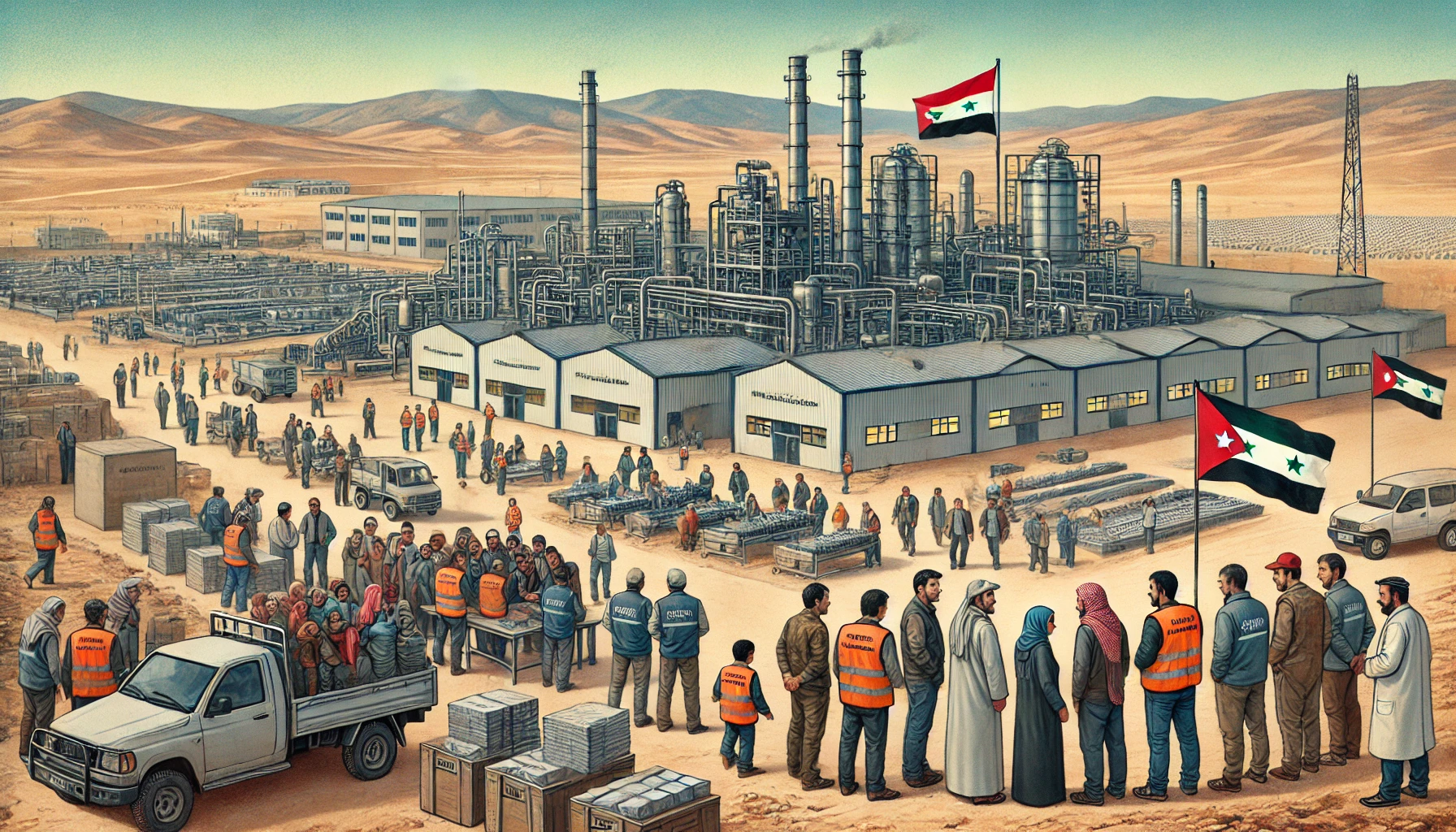The Economic Impact of Syrian Refugees on Jordan: Labor Gains, Export Struggles
The study examines the economic impact of Syrian refugee migration on Jordan, highlighting successful refugee integration into the manufacturing sector but minimal impact on exports to the European Union. It emphasizes the need for deeper reforms to fully realize the potential benefits of refugee integration and trade growth.

A recent study, conducted by researchers from Tilburg University, the World Bank, and Texas A&M University, examines the economic impact of Syrian refugee migration on Jordan, focusing on the integration of refugees into the labor force and its effects on the country’s exports. The influx of over 660,000 Syrian refugees between 2011 and 2015, resulting from the Syrian Civil War, placed significant pressure on Jordan’s economy and labor market. Many of these refugees were of working age, but their levels of education were generally lower than those of the Jordanian population. In response, the Jordanian government, with international assistance, sought to integrate them into the labor market, particularly in the manufacturing sector. One of the key policies aimed at achieving this was the 2016 Jordan Compact (JC), an agreement between Jordan and the European Union that aimed to facilitate the integration of Syrian refugees and boost Jordan’s export profile by simplifying rules of origin for certain industries.
Challenges of Integrating Refugees into Jordan’s Labor Force
The study evaluates two main hypotheses. The first explores whether the Jordan Compact succeeded in increasing Jordan’s exports to the European Union, while the second examines whether the integration of Syrian refugees into the manufacturing sector helped boost Jordan’s exports to all destinations. Using a gravity difference-in-differences analysis of labor force and trade data, the researchers found limited evidence supporting the first hypothesis. Although the Jordan Compact was designed to increase Jordan’s exports to the EU through simplified rules of origin, the impact on EU-bound exports was minimal. However, the second hypothesis was strongly supported, as the integration of Syrian workers into the manufacturing sector appeared to contribute to a significant increase in exports across various regions. This finding indicates that while the Jordan Compact's trade-related objectives were not fully realized, the policy did facilitate meaningful labor market integration, particularly in manufacturing.
Skill Mismatches and Limited Employment Opportunities
The success of integrating refugees into the manufacturing sector was notable, but the research also highlights several challenges. A key issue was the mismatch between the skills of Syrian refugees and the demands of the Jordanian labor market. Many refugees, even those with higher levels of education, found themselves in low-skilled or labor-intensive jobs. This mismatch limited the potential benefits of their integration, especially in high-skill sectors. Labor force surveys showed that refugees were underrepresented in many sectors, with most concentrated in low-wage industries like agriculture and manufacturing. Nonetheless, Syrian workers became a significant part of the workforce in manufacturing, contributing to an overall boost in the sector’s exports.
Trade Liberalization Efforts and Export Growth Challenges
The study also provides a detailed analysis of Jordan’s broader trade patterns. Over the past two decades, Jordan has pursued a policy of trade liberalization, signing several trade agreements, including the Pan-Arab Free Trade Area, the US-Jordan Free Trade Agreement, and the EU-Jordan Association Agreement. As a result, Jordan’s tariff rates have dropped significantly, from 18.9 percent in 2000 to 4.0 percent in 2020. Despite these efforts, Jordan’s export growth has been slower than expected, and the country’s trade balance has remained negative. Jordan’s exports as a percentage of GDP declined from a peak of 56 percent in 2008 to 36.7 percent in 2019. The export sector has also become less diverse, with a heavy reliance on chemicals (mainly fertilizers and pharmaceuticals) and textiles. While the textiles and clothing sector accounted for a significant portion of exports in the early 2000s, its share has fluctuated over time, and recent growth in capital-intensive textiles has been modest.
Minimal Impact on Exports to the European Union
The research points out that the Jordan Compact, while successful in integrating Syrian refugees into the workforce, did not lead to the anticipated boost in exports to the EU. The simplified rules of origin were intended to make it easier for Jordanian companies to export to the EU, but the study finds no significant evidence of increased exports to Europe as a result of these changes. Instead, the overall increase in exports was driven by Jordan’s broader trade relationships, particularly with countries like Saudi Arabia and the United States. The study also notes that the Jordanian government faced several challenges in implementing the Jordan Compact, including the informal nature of many industries targeted by the policy and logistical issues related to the location of Syrian refugees, many of whom lived far from the special economic zones where export-oriented jobs were available.
Refugee Integration and the Path to Sustainable Growth
Overall, the study offers valuable insights into the economic integration of refugees and the challenges of using trade policy to support such integration. While the Jordan Compact succeeded in helping Syrian refugees find jobs in manufacturing, translating this success into broader export growth proved more difficult. The researchers conclude that, while regulatory changes like simplified rules of origin can play a role in facilitating economic growth, deeper structural reforms and additional supportive measures may be needed to fully realize the potential benefits of refugee integration. This research contributes to the broader literature on the economic impacts of forced migration, highlighting the complex interplay between labor market integration, trade policy, and economic development. Jordan’s experience underscores the importance of aligning domestic labor market strategies with international trade policies to ensure that refugee integration leads to sustainable economic growth.
- FIRST PUBLISHED IN:
- Devdiscourse










